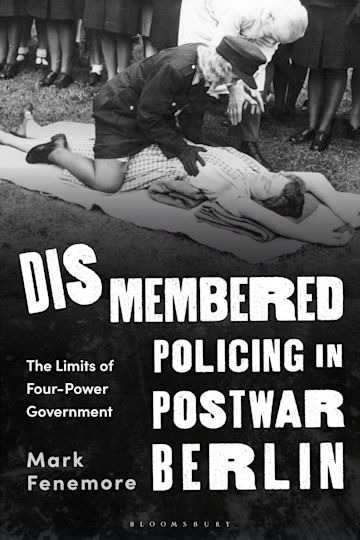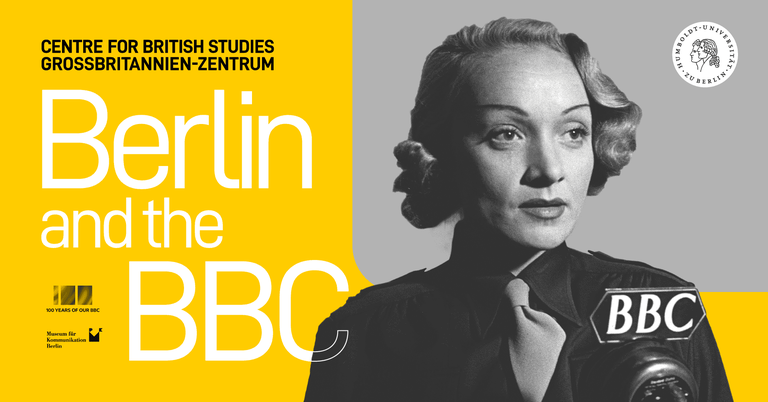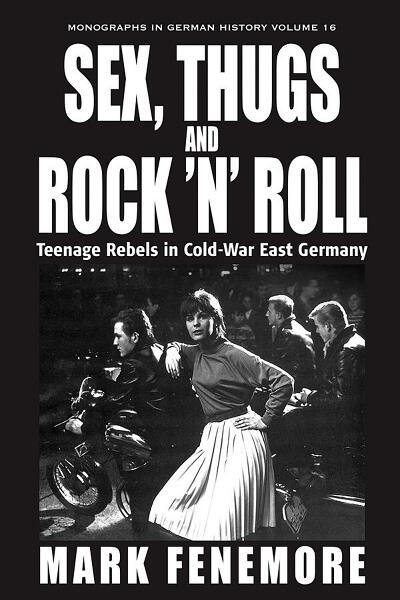
Dr Mark Fenemore
Senior Lecturer in Modern European History
My profile
Biography
Aside from the societies and cultures of cold war Germany, I share an appreciation of classic 1960s soul. My passion, apart from history, is for European cinema.
Academic and professional qualifications
BA (History) Newcastle, MA (Modern European History) University of East Anglia, PhD (German Studies) University College London.
Languages
Fluent French and German. Good comprehension in Spanish, Italian and Esperanto.
Other distinctions
Kluge Fellowship at the Library of Congress, Washington DC.
Postdoctoral Research Fellowship at the University of Limerick.
Isobel Thornley Fellowship at the Institute of Historical Research.
Personal website address
Projects
I have researched in Germany (Bundesarchiv, Landesarchiv, Stasi archives), Britain, the USA and France (Archives Diplomatiques). My PhD in German History was supervised by Professor Mary Fulbrook at UCL. In 1999, I was employed by Davenport Lyons (representing Penguin Books), as a researcher for Professor (Sir) Richard J. Evans, on the Irving vs. Lipstadt libel trial . The focus of my most recent research has been Cold War Berlin (see the Wiki).

Dismembered Policing in Postwar Berlin: The Limits of Four-Power Government (London: Bloomsbury, 2023)
Assessing the impact of Germany’s defeat on the policing of Berlin, this book addresses the reconstruction of the police force as a crucial component of four-power government. As Mark Fenemore shows, getting four nationalities to work together to administer a complex major city was a unique undertaking, never before attempted. The situation was made even more difficult by the conditions of hunger and desperation that caused a spike in crime. The stage was a city in ruins, the capital of a defeated, divided, prostrate, occupied country. The audience the administrations were playing to was a population deeply scarred by Nazism, total war, cold, hunger and mass rape.
Dismembered Policing explores postwar Berlin from the perspective of all four occupiers and of ordinary Berliners. Fenemore discusses how each occupation government sought to act as an advertisement for its country’s respective cultural values, mores and system of governance.
As an international, multi-archival study, the book draws on evidence in French and German as well as in English. Using law enforcement as a lens, it examines issues like mass rape, the black market, interracial sex and political violence. With hunger, sexually motivated assault and dismembered body parts featuring prominently, it is reminiscent of Ian McEwen’s novel The Innocent, but based on real police files.
‘The Policing of Berlin as a Post-Conflict City’, Amsterdam Museum Journal 1 (2023).
The essay explores the difficult transition from war to peace in the defeated capital of Hitler’s Third Reich. Not only did Soviet forces exact terrible revenge on the civilian population, but conditions of desperation and hunger led to a spike in black-market activity and crime. The Unconditional Surrender, ratified by Potsdam, set up a significant imbalance of power between the occupiers and the occupied. Amid conditions of continued hunger, in the sheets as well as on the streets, such a blatant asymmetry encouraged exploitation and immorality. As a wounded and post-conflict city, Berlin posed special problems for the police authorities. With many policemen having tainted themselves through participation in illegitimate oppression and war crimes, policing had to be begun again from scratch. Although the Allies had lofty ideals of how to reform policing (reflecting their national traditions, but also progressive ideas about the employment of women), their lack of unity, together with the scale of the practical difficulties the city faced, meant that such reforms became watered down and ineffectual. The former capital’s need to regenerate and heal was sacrificed to the needs of the cold war. Women and anti-Nazis were increasingly marginalized, while former Gestapo men found favour.

‘Dancing at the Edge of the Crossroads/Abyss: Panorama Goes to Berlin, 1959-1961’ in Berlin and the BBC, edited by Patrick Major and Miles Taylor (Berlin: De Gruyter, forthcoming, 2024)
The chapter is original and significant in approaching the topic from both technological and gender-history angles. The rigour comes from comparing in-house BBC memos with memoir literature, especially the biographies of David Dimbleby and Robin Day. The impact is substantial, combining both television studies and the history of cold-war Berlin.
‘Sensual Sirens: Gendering Berlin’s Cold War Telephony’ in Sensory Warfare in the Global Cold War: Partition, Propaganda, Covert Operations, edited by Bodo Mrozek (Pennsylvania State University Press, forthcoming, 2024)
Sensory history is an entirely new field of research. Fenemore was part of the pioneering conference that will form this original and significant edited volume. His rigorous research took the case of a proto-phone phreak from Stasi files and applied an impactful gender-history lens to it.

Fighting the Cold War in Post-Blockade, Pre-Wall Berlin. Behind Enemy Lines (London: Routledge, 2019).
As fought in 1950s Berlin, the cold war was a many-headed monster. Winning stomachs with enticing consumption was as important as winning hearts and minds with persuasive propaganda. Demonstrators not only fought the police in the streets; they were swayed one way or another by cultural competition. Western espionage agencies waged brazen but surreptitious covert warfare, while the Stasi fought back with a campaign of targeted kidnapping. This book takes seriously a complex borderscape, which narrowed but did not stem the flow of people, ideas and goods over an open boundary. Assessing the licit and the illicit, the book stresses the messy and entwined nature of this war of a thousand cuts (or miniscule salami slices). While brinkmanship was orchestrated by the elites in Moscow and Washington, the effects of such intense psychological pressure were felt by ordinary Berliners, who sought to carry on with their mundane, but border-straddling everyday lives in spite of the ideological bifurcation. For a summary of the chapters (with abstracts), see Fighting the Cold War.
The History of ‘Spy’ Ballooning, 1783-2023: Military Reconnaissance, Espionage, Stealth Bombing and Propaganda (forthcoming, 2024)
US President Joe Biden termed the ‘Al-Aqsa Flood’ Hamas assault ‘the deadliest day for Jews since the Holocaust’. 7 October pointed to the scale of the consequences if a military balloon service is neglected or discounted. The book is footnoted like an academic text, but written in a vivid, clear and accessible style for non-academics. This is the first book to link 2023 to 1783 and to explore the span of technological innovations and improvements in balloon technology in the 240 years between.
‘60 years since the building of the Berlin Wall, on 13 August 1961’ (free web article, published 13 August 2021)
With the searchlights and absence of life, images of the wall conjure up a sense of foreboding, tension and dread. Sinister and dystopian, they illustrate the death strip, created by the East German control authorities, at their border with West Berlin. Lit by searchlights and bereft of even a shrub to hide behind, this fortified border strip was designed to facilitate death by shooting. It was a system perfected to be inescapably, inhumanely effective. Other parts of the border had dogs and mines. Even if escapees got past the canine sensors, machine guns and searchlights, the automatic firing devices mines were designed to maim or kill them remotely. In the decades after its construction, the Berlin Wall became a highly efficient killing machine. It caused not just pain and suffering to the families of its immediate victims. Berliners (and Germans as a whole) were ruthlessly separated from one another and ‘painfully torn apart’ by the GDR government’s callous actions.
Watching the Watchers: Tilda Swinton’s Filmic Psychogeography of the Berlin Wall (free web article, paper given at the ‘Apocalyptic Nostalgia? Cold War Imagery in Popular Culture Conference’, July 2023).
For three decades, a wall of concrete symbolized the pain of a city ripped in two. Until it disappeared suddenly, in November 1989, the wall constituted a symbol of both real and potential violence, with apocalyptic implications. As well as a barometer of cold-war pressures and tensions, the cold-war border in Berlin was a tripwire. Were the Soviets to invade, then it would probably result in nuclear conflict.

Sex, Thugs and Rock ‘n’ Roll. Teenage Rebels in Cold-War East Germany (Oxford: Berghahn, 2007).
A fascinating and highly readable account of what it was like to be young and hip, growing up in East Germany in the 1950s and 1960s. Living on the frontline of the Cold War, young people were subject to a number of competing influences. For young men from the working class, in particular, a conflict developed between the culture they inherited from their parents and the new official culture taught in schools. Merging with street gangs, new youth cultures took shape, which challenged authority and provided an alternative vision of modernity. Taking their fashion cues, music and icons from the West, they rapidly came into conflict with a didactic and highly controlling party-state. Charting the clashes which occurred between teenage rebels and the authorities, the book explores what happened when gender, sexuality, Nazism, communism and rock ‘n’ roll collided during a period, which also saw the building of the Berlin Wall.
Teaching
COLD WAR MENTALITIES
As a socio-cultural history of the cold war, especially the cold war as experienced on the home front, it covers the USA (McCarthyism, domesticity), USSR (Postwar Stalinism, Soviet Views of American Popular Culture), Mao’s China (including the Cultural Revolution), Cold War Germany, Brainwashing, CIA Mind Control and Espionage.
In the standard history of the cold war, I taught historiography, Hiroshima, Korea, the Cuban Missile Crisis, Vietnam and the new Cold War (involving Reagan and Gorbachev).
Supervision
I am happy to discuss PhD projects on the history of the cold war, postwar Germany, the history of policing and/or sexuality. Please get in touch if you would like to discuss your research plans.
Research outputs
-
Books (authored/edited/special issues)
Fenemore, M. (2023) Dismembered Policing in Postwar Berlin The Limits of Four-Power Government. Bloomsbury Publishing.
Fenemore, M. (2019) Fighting the Cold War in Post-Blockade Pre-wall Berlin. Routledge.
Fenemore, M. (2007) Sex, thugs and rock 'n' roll: Teenage rebels in cold-war East Germany.
-
Chapters in books
Fenemore, M. 'Sensual Sirens: Gendering Berlin’s Cold War Telephony.' Sensory Warfare in the Global Cold War. Partition, Propaganda, Cover Operations. Pennsylvania State University Press,
Fenemore, M. (2009) 'Shaping Sexual Knowledge.' In Sauerteig, L., Davidson, R. (ed.) Shaping Sexual Knowledge. Taylor & Francis,
Fenemore, M. (2008) 'The growing pains of sex education in the German Democratic Republic (GDR), 1945-69.' ) Shaping Sexual Knowledge: A Cultural History of Sex Education in Twentieth Century Europe. Routledge,
-
Journal articles
Fenemore, M. (2023) 'The Policing of Berlin as a Post-Conflict City.' Amsterdam Museum Journal: War, 1(1)
Fenemore, M. (2019) 'Victim of kidnapping or an unfortunate defector? The strange case of Otto John.' Cold War History, 20(2) pp. 143-160.
Fenemore, M. (2015) 'Youth Opposition in the GDR, 1945-1965.' Totalitarianism and Democracy, 12(2) pp. 249-268.
Fenemore, M. (2012) 'Distorting Mirror for Society or Mosaic Stones of a Fragmented Self: The Writings of Franz Goll.' German History, 30(2) pp. 283-290.
Fenemore, M. (2009) 'The recent historiography of sexuality in twentieth-century Germany.' Historical Journal, 52(3) pp. 763-779.
Fenemore, M. (2005) 'Book Review: Germany's Cold War. The Global Campaign to Isolate East Germany, 1949-1969.' German History, 23(1) pp. 136-137.
Fenemore, M. (2004) 'Book Review: Laindliche Gesellschaft in der kommunistischen Diktatur. Zwangsmodernisierung und Tradition in Brandenburg 1945-1963; Blockpartei und Agrarrevolution von oben. Die Demokratische Bauernpartei Deutschlands 1948-1963.' German History, 22(2) pp. 147-149.
-
Non-peer reviewed articles / reviews
Fenemore, M. (2021) Comrades in Arms: Military Masculinities in East German Culture.
Fenemore, M. (2020) German Division as Shared Experience: Interdisciplinary Perspectives on the Postwar Everyday.
Fenemore, M. (2019) A Social History of Rock 'n' Roll in Germany: Hamburg from Burlesque to the Beatles, 1956-1969.
Fenemore, M. (2018) What Remains: Everyday Encounters with the Socialist Past in Germany.
Fenemore, M. (2017) Youth Movement: A new Story, 1918-1933.
Fenemore, M. (2017) Shaping the New Man: Youth Training Regimes in Fascist Italy and Nazi Germany.
Fenemore, M. (2016) Political Youth in the Upheaval of 1988/89: Generational Dynamics in the GDR and the People's Republic of Poland.
Fenemore, M. (2016) State, Society and Memories of the Uprising of 17 June 1953 in the GDR.
Fenemore, M. (2016) "We wanted to do something". Resistance of Young People in Werder at the Havel 1949-1953.
Fenemore, M. (2015) Envisioning Socialism: Television and the Cold War in the German Democratic Republic..
-
Other
Fenemore, M. (2014) Forward to the new People? The socialist Education in the GDR (1949-1989).
Fenemore, M. (2013) State and Minorities in Communist East Germany.
Fenemore, M. (2013) After The History of Sexuality: German Genealogies With and Beyond Foucault.
Fenemore, M. (2012) Within Walls: Private Life in the German Democratic Republic.
Fenemore, M. (2012) Life among the Ruins: Cityscape and Sexuality in Cold War Berlin..
Fenemore, M. (2012) Surviving Hitler's War: Family Life in Germany, 1939-48.
Fenemore, M. (2011) Death in Berlin: From Weimar to Divided Germany.
Fenemore, M. (2011) The Plans that Failed: An Economic History of the GDR.
Fenemore, M. (2011) Socialist Cities between Domination and Self-Assertion. Local Politics, Urban Planning and Everyday Life in the GDR.
Fenemore, M. (2010) Synthetic Socialism: Plastics and Dictatorship in the German Democratic Republic.
Fenemore, M. (2010) Youth Politics in East Germany: The Free German Youth Movement 1946-1968.
Press and media
Media appearances or involvement
See the Guardian article talking about my book.
Embarrassing though it is, footage survives of me being roped into an obscure and experimental Eastern European film production with subtitles.
